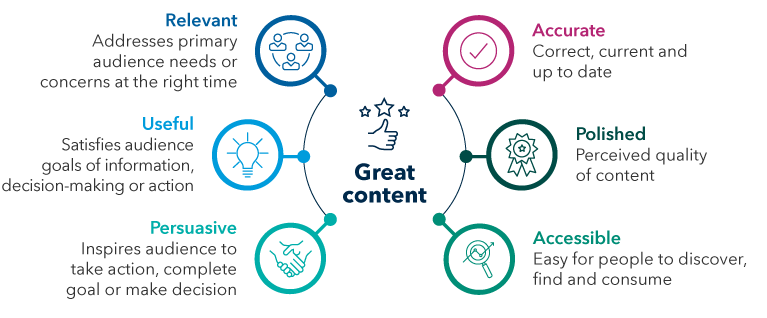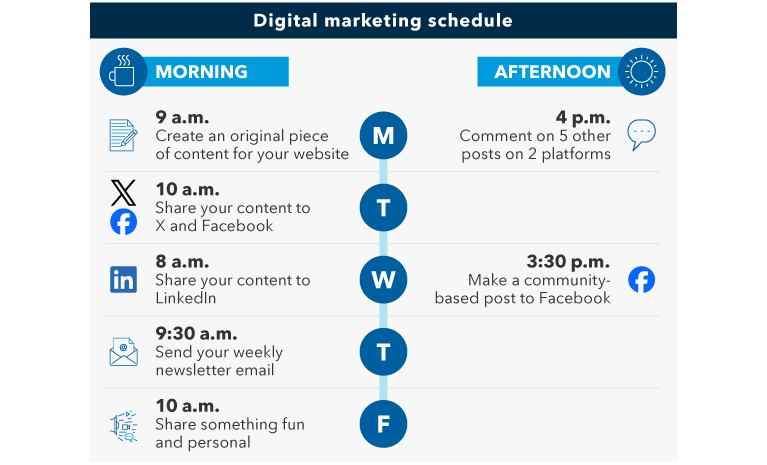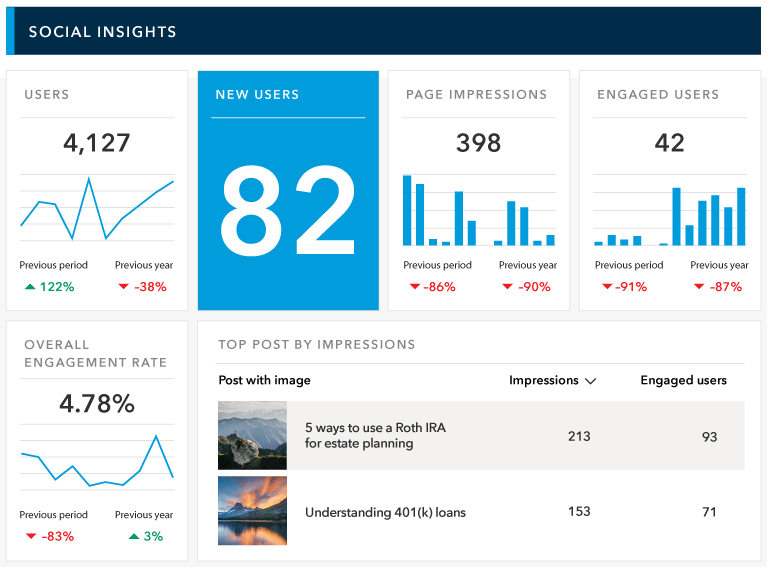If you think of yourself as too old-fashioned (or just too old) to market your practice on social media, it may be time to change your perspective. For one thing, social media is as close to traditional, long-term prospect nurturing as the digital age gets. Technology allows you to connect and interact with prospects, both in real time and over longer periods, to create organic relationships that can be turned into new business.
Social media is also an increasingly important channel for connecting with new clients. More than three-quarters of internet users use social media for brand research, according to Hootsuite’s 2023 Social Media Trends report. The same report found that businesses that are leaders in the social selling space create 45% more sales opportunities than brands that have little to no social media participation. Additionally, according to Broadridge Advisor Solutions’ 2023 Financial Advisor Marketing Playbook, 41% of advisors say they have acquired new clients via social media.
Whether you are just getting started or attempting to get more strategic, these ideas can help you optimize your social media marketing. (Keep in mind, some firms may have restrictions on social media activity, so be sure to check your firm’s guidelines before you begin.) Here are eight tactics to try if you want to turn social media into a client-prospecting paradise.




